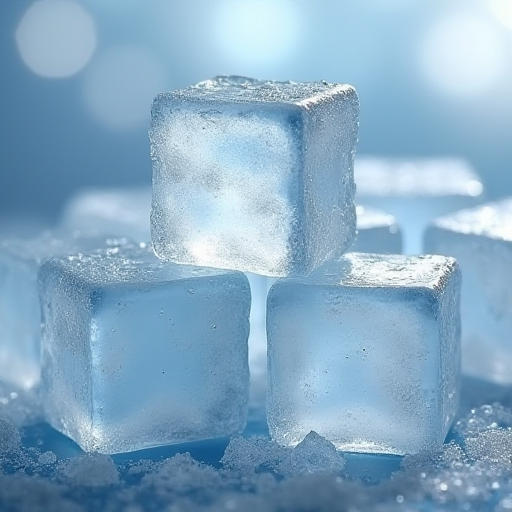
Why Do Ice Cubes From The Freezer Look Cloudy?
Ice cubes are a common household item, used to chill drinks and add a refreshing touch to beverages. However, if you've ever examined an ice cube made in your home freezer, you've likely noticed that it often appears cloudy rather than clear. This cloudiness can make ice cubes seem less appealing, and it raises the question: why do ice cubes from the freezer look cloudy? This article delves into the science behind this phenomenon and explores ways to achieve clearer ice.
Understanding Ice Formation
To understand why ice cubes appear cloudy, it's essential to grasp the basics of ice formation. Ice is simply frozen water, and its clarity is affected by the presence of impurities and the process of freezing itself.
The Freezing Process
When water freezes, it undergoes a phase change from liquid to solid. The freezing process begins at the outer edges of the water and progresses inward. This is because the colder temperatures from the freezer affect the outer layers first. As the water freezes, ice crystals start to form.
Impurities and Air Bubbles
One of the primary reasons for cloudy ice cubes is the presence of impurities in the water. Tap water contains various dissolved minerals and gases, such as calcium, magnesium, and carbon dioxide. As the water freezes, these impurities are pushed towards the center of the ice cube because the ice crystals form on the edges first. This central concentration of impurities leads to cloudiness.
Additionally, air bubbles trapped in the water contribute to the cloudy appearance. As the water freezes, it expels air, and these air bubbles get trapped in the ice, further clouding its appearance.
Factors Contributing to Cloudy Ice
Several factors can contribute to the cloudiness of ice cubes from the freezer:
1. Water Quality
The mineral content and impurities in the water used to make ice cubes play a significant role in their clarity. Hard water, which contains higher concentrations of minerals, is more likely to produce cloudy ice.
2. Freezing Speed
The speed at which water freezes can affect the clarity of ice. Home freezers typically freeze water relatively quickly, leading to the rapid formation of ice crystals and trapping of impurities and air bubbles. In contrast, slower freezing processes allow for impurities and air bubbles to escape before the water solidifies completely.
3. Freezer Temperature
The temperature of your freezer also affects ice clarity. A very cold freezer will freeze water faster, increasing the likelihood of cloudy ice due to trapped air and impurities.
Achieving Clear Ice
While cloudy ice is harmless and perfectly safe to use, some people prefer clear ice for aesthetic reasons, especially in cocktails and other beverages. Here are some methods to achieve clearer ice cubes:
1. Use Purified Water
Using distilled or purified water can significantly reduce the presence of impurities, leading to clearer ice. Filtering tap water can also help by removing some minerals and impurities.
2. Boil the Water
Boiling water before freezing it can reduce the amount of dissolved gases and help achieve clearer ice. Allow the boiled water to cool before pouring it into ice trays.
3. Slow Freeze Method
Creating a slow freezing environment can help produce clearer ice. One way to do this is by insulating the sides of the ice tray, allowing the water to freeze from the top down. This method mimics the way natural ice forms in lakes and ponds, where the top layer freezes first, pushing impurities downward.
4. Directional Freezing
Directional freezing involves controlling the direction in which ice forms, typically from the top down. Special ice molds are available that use insulation to force the ice to freeze directionally, resulting in clearer ice cubes.
Conclusion
Cloudy ice cubes are a result of impurities and air bubbles trapped during the freezing process. While they are safe to use, their cloudy appearance can be undesirable for some. By understanding the factors contributing to cloudiness and employing techniques to minimize impurities and control freezing conditions, you can enjoy clearer ice cubes for your beverages. Whether for aesthetic or practical reasons, achieving clear ice is possible with a little extra effort and attention to detail.
